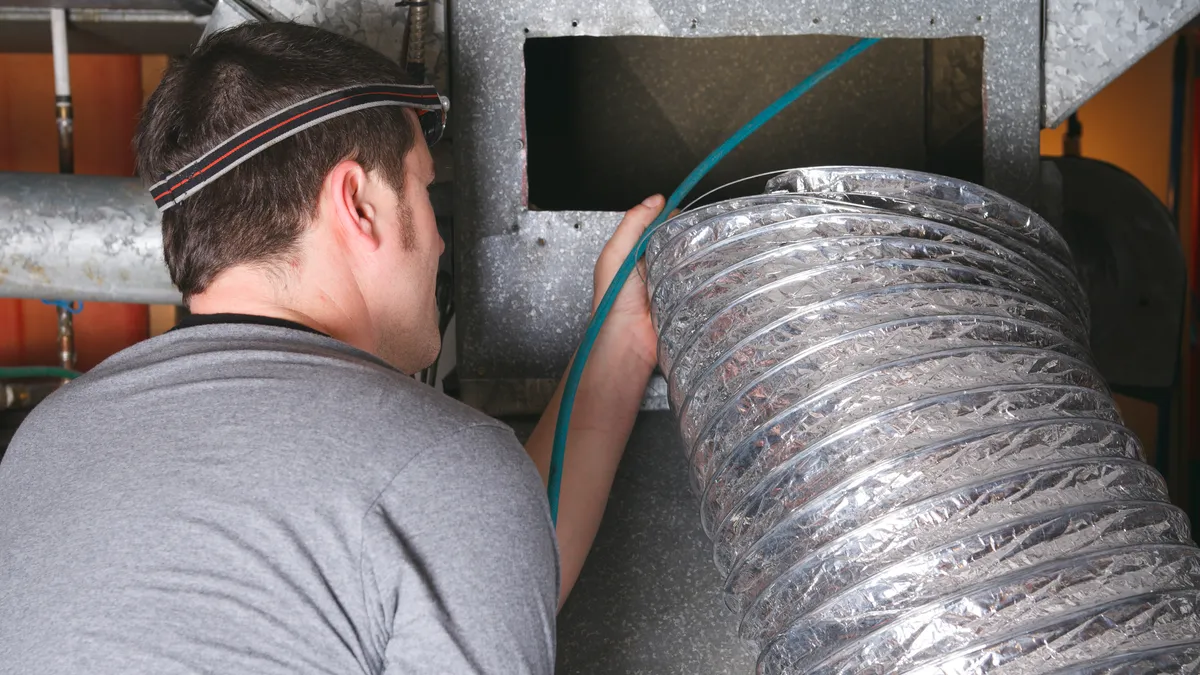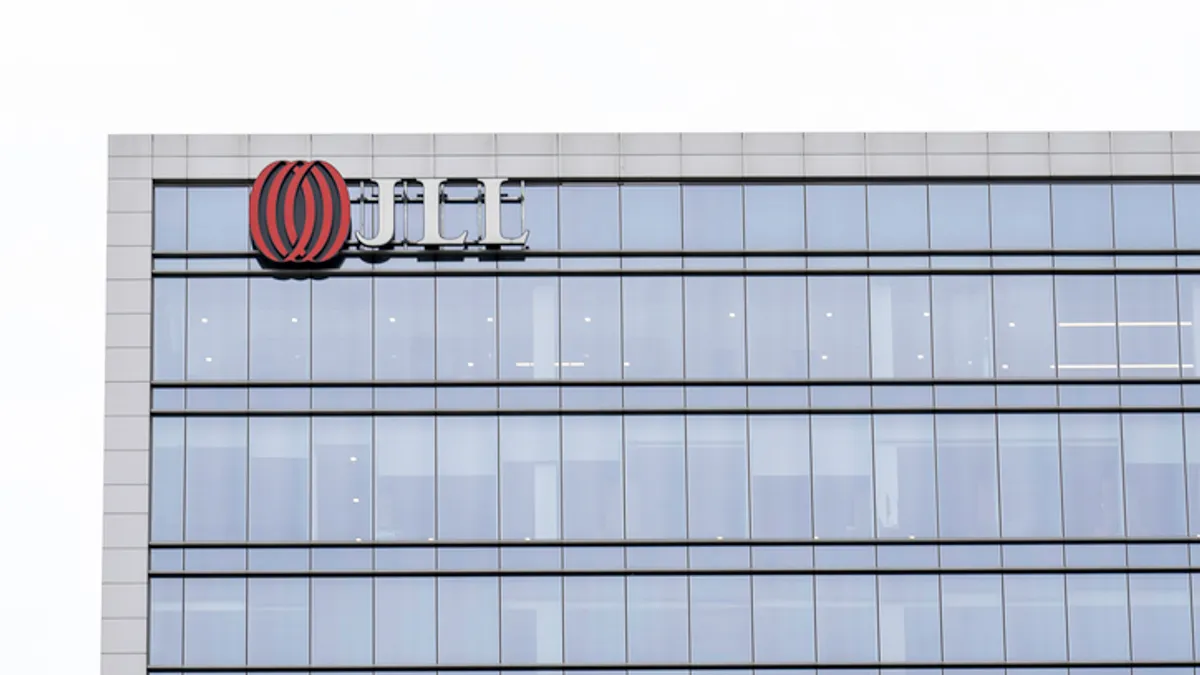As 2024 unfolds, building operators are facing high interest rates, rising labor costs and a lack of skilled workers, low occupancy levels and declining values of office and retail properties, with the weak commercial real estate market a concern large enough to potentially affect the U.S. economy. As companies gradually adjust to hybrid work or ramp up their in-office mandates, their changing space needs and utilization have facilities managers looking at how to maximize their buildings’ appeal.
Exacerbating these challenges is the mounting pressure to decarbonize in the face of anticipated ESG reporting and emissions reduction requirements, which pose questions about effective benchmarking. A bright spot is the growth of AI-powered building management systems, which are gaining recognition for their potential to address issues from energy efficiency to air quality and even the skilled labor shortage.
Here are six trends that are top of mind for facilities managers in 2024.
Operators face increased decarbonization pressures
The pressure to decarbonize is mounting with the U.S. Securities and Exchange Commission’s expected climate disclosure rules and mandatory emissions reporting and reduction laws like New York City’s Local Law 97.
A recent McKinsey report points to the potential of machine learning, artificial intelligence and physics-based modeling in helping building owners and managers identify building decarbonization opportunities more quickly. This AI-based approach could yield neutral to positive returns on investment for real estate portfolios, offering financially optimized plans for an entire portfolio within weeks, the report states.
Relatively simple measures of reducing energy use — often a first step to reducing emissions — include installing LED fixtures and light sensors, upgrading building envelopes to improve thermal performance and digitally optimizing building management systems controlling HVAC systems, according to research from Schneider Electric. Such efforts can result in cost savings through reduced energy consumption and potentially garner higher rental premiums since tenants are willing to pay higher prices for greener office spaces.
Still, even small efficiency efforts can have costs. “One of the big questions we’re facing is [how to] balance concerns about the affordability of real estate. It’s harder for existing buildings to meet newer energy efficient standards, and they’re facing really difficult trade-offs,” James Coleman, a nonresident senior fellow at the American Enterprise Institute, said in an interview. The affordability challenge is particularly pronounced in states that require compliance from existing buildings, raising concerns in markets already saturated with commercial office space, Coleman added.
Emissions and energy efficiency benchmarking become essential
Before you can decarbonize, you need to understand and quantify your building’s emissions, which itself can be a complex task, especially for large systems, said Andy Woommavovah, system leader for facilities management and construction at Trinity Heath. Facilities managers may need to either hire sustainability specialists — who are in great demand and short supply — or enlist third parties to train internal teams on carbon footprint calculations and emissions accounting, he said in an interview.
Quantifying emissions is becoming more urgent as states and local governments are increasingly adopting building performance standards laws to combat climate change.
Key questions include what qualifies as good benchmarking data, how that data can be securely managed and how operators can navigate cost concerns related to emissions measurement as well as meeting updated building codes and BPS.
Return-to-office pressures and incentives prompt right-sizing and utilization improvements
Nearly four years since the COVID-19 pandemic emptied workplaces across the world, the five-day, in-office work week has not returned to the norm, with 62% of companies currently executing a hybrid work strategy and just 38% requiring workers to return to the office full time, according to VTS’ 2024 Global Workplace report.
This trend has created pressure for organizations to recalculate their real estate footprints and workplace needs. CBRE’s 2023-2024 Global Workplace and Occupancy Insights report notes that 43% of organizations it surveyed worldwide plan to decrease their portfolio size by more than 30% in the next three years, with 29% of respondents saying they plan to expand their portfolio in that time. Companies are now using performance metrics like utilization rates and employee sentiment, instead of square feet per seat, to make decisions that improve effective use of space, the real estate services firm notes in the report.
The CBRE report also identifies the top frustrations North American companies express about their office spaces. A lack of collaborative spaces tops the list, with 40% of respondents citing limited space for team meeting and brainstorming sessions. Thirty-four percent said they are challenged by a poor technical experience, such as issues with internet speed or reliability, and 30% cite inadequate space utilization, such as overcrowded or underutilized space. Those complaints are leading operators to introduce more tech-enabled collaborative spaces to accommodate tenants, the CBRE report states.
“Polling tenants and gathering insights to understand their utilization (while keeping the context of your broader relationship with the tenant company in mind) will help you create the right renewal strategy for each tenant,” the report states.
Efforts to address anticipated labor shortages ramp up
An aging workforce, early retirements and the lingering effects of the COVID-19 pandemic are creating long-term challenges in facilities management, JLL Technologies warns. The exodus of skilled workers and a scarcity of young talent also pose imminent concerns.
Inflation is also expected to persist for hard services contracts such as electrical, plumbing and HVAC, according to CBRE’s 2023 Facilities Management Cost Trends report, which found that labor markets “will remain tight and wage growth will drive FM cost growth,” even in the event of a recession in 2024.
The Biden administration is taking a variety of steps to address the skilled workforce shortage. The U.S. Department of Energy is allocating over $40 million in grants to expand workforce training and establish industrial assessment centers and building training and assessment centers, making the adoption of clean energy technology a potential source of job creation, even as automation is expected to impact many jobs.
The U.S. Department of Labor’s proposed apprenticeships rule identifies another means to close the gap between job-seekers and businesses seeking talent, with the Burning Glass Institute pointing to potential wage increases of around $28.5 billion that could result from over 830,000 new apprenticeships annually. Many companies are also eliminating bachelor’s degree requirements for entry-level and mid-level positions, with nearly half of them planning to extend this trend in 2024.
Even so, the skills gap is expected to affect around 42% of companies within the next two years, according to a Salary.com survey. In response, organizations are investing in upskilling and learning initiatives to help their teams navigate the impact of generative AI and other rapidly evolving technologies.
Questions linger about whether these efforts are sufficient to address the worker shortage, leading organizations to bolster their staff retention strategies, such as creating a positive workplace experience, offering health insurance, focusing on wellness and providing competitive salaries.
Intelligent building management systems show what they can do
While some relatively simple measures can drive some emissions reductions and reduce energy consumption, building management systems have the potential to provide a more impactful and holistic reduction to building energy use, facilities management experts say. These systems integrate sensor data, building controls and tenant information to facilitate informed decision-making and automate processes across facilities.
Building management systems increasingly leverage artificial intelligence and machine learning to automate ventilation, air quality and lighting controls to reduce energy use and streamline maintenance operations. The BMS technologies used in some of the world’s newest, most cutting-edge buildings have the potential to cut operational carbon emissions in existing building stock up to 42%, according to research by Schneider Electric.
Facilities management teams are also turning to building management systems to inform their maintenance decisions, plan capital improvements and minimize the impacts of high labor costs and skilled labor shortages, according to Nick Gayeski, co-CEO of Clockworks Analytics, which provides automated building analytics, fault detection and maintenance solutions through its platform. By integrating maintenance into building management systems, operators can reduce the number of service trips made to inspect or repair a piece of equipment. It can also provide insights into the efficiency of equipment to determine when tune-ups are needed to extend the life of assets, Gayeski said.
New expectations, standards make indoor air quality a priority
Although the pandemic is over, concerns over indoor air quality remain. A Fellowes survey found that workers rank indoor air quality above other benefits, like health allowances, stipends, free coffee and snacks, social gatherings or happy hour and social events.
In addition to seeing the value tenants place on clean air, facilities managers are facing new standards — such as ASHRAE 241 and updated guidance by the Centers for Disease Control and Prevention — that will require them to meet equivalent clean airflow thresholds and improve the filters they use. With those developments, and the incorporation of indoor air quality into LEED version 5, “I do think that we are going to see a shift to more of a focus around healthier buildings,” said Arti Lyde, managing director of IAQ at Fellowes.
The good news is that meeting improved indoor air quality standards may result in energy savings, according to Sam Molyneux, co-founder and co-CEO of Poppy, a company that tests indoor air quality and helps companies comply with standards. “Seventy-five percent of Class A buildings we find are over ventilated. So there's a huge airflow reduction or air change reduction opportunity,” he said.
Another operator concern is how buildings can provide clean air when the outside air is of poor quality, such as during the spread of smoke from wildfires. While ASHRAE Standard 241 and CDC guidelines recommend minimums for equivalent clean air exchange, this usually involves increasing the circulation of outdoor air, which is not feasible during periods of poor outdoor air quality.
“You may need to shut off the amount of outdoor air that you're using and find alternate means through either indoor, standalone or connected air filtration technologies,” Lyde added.























